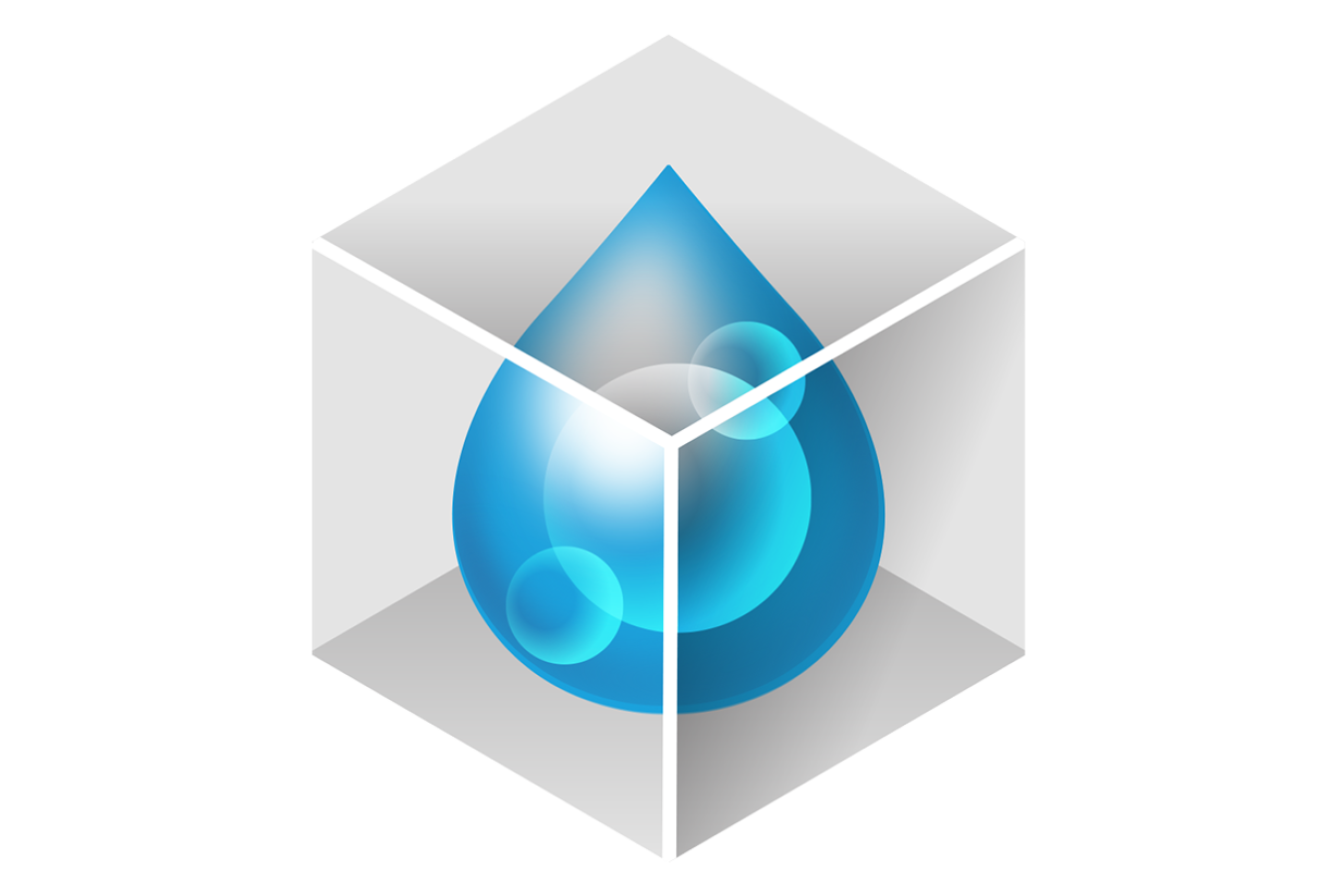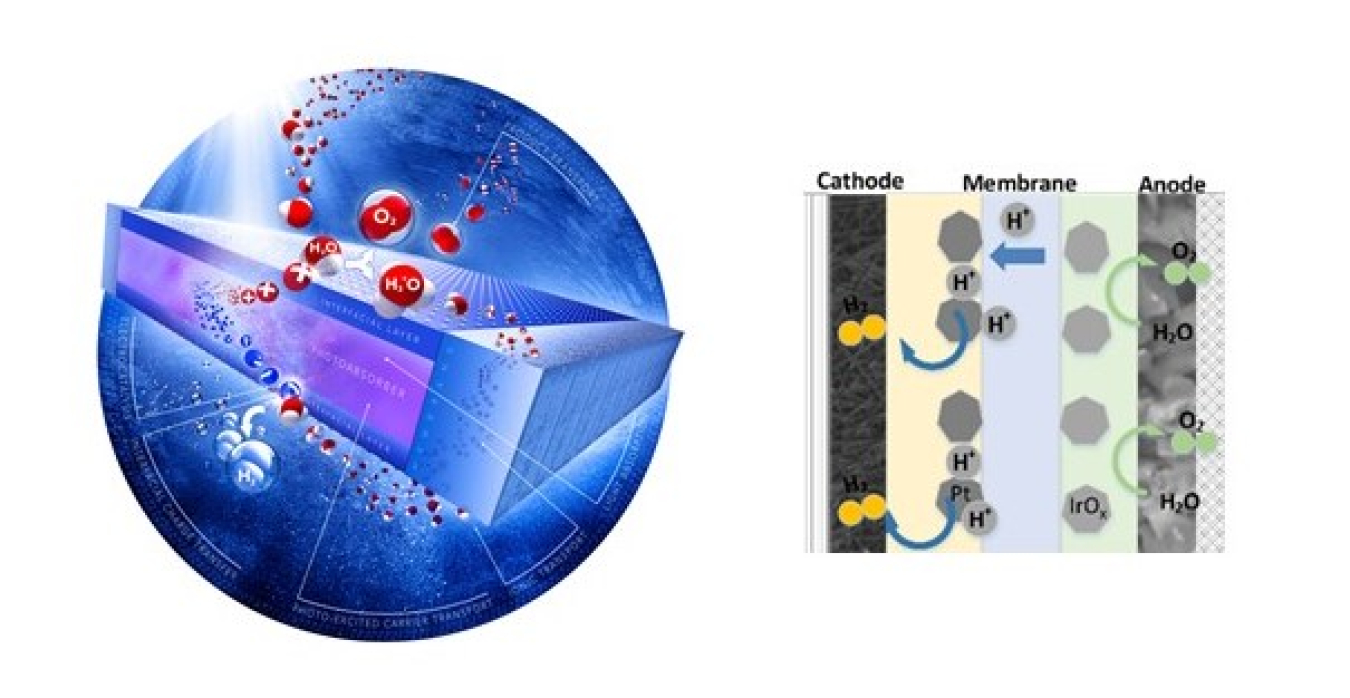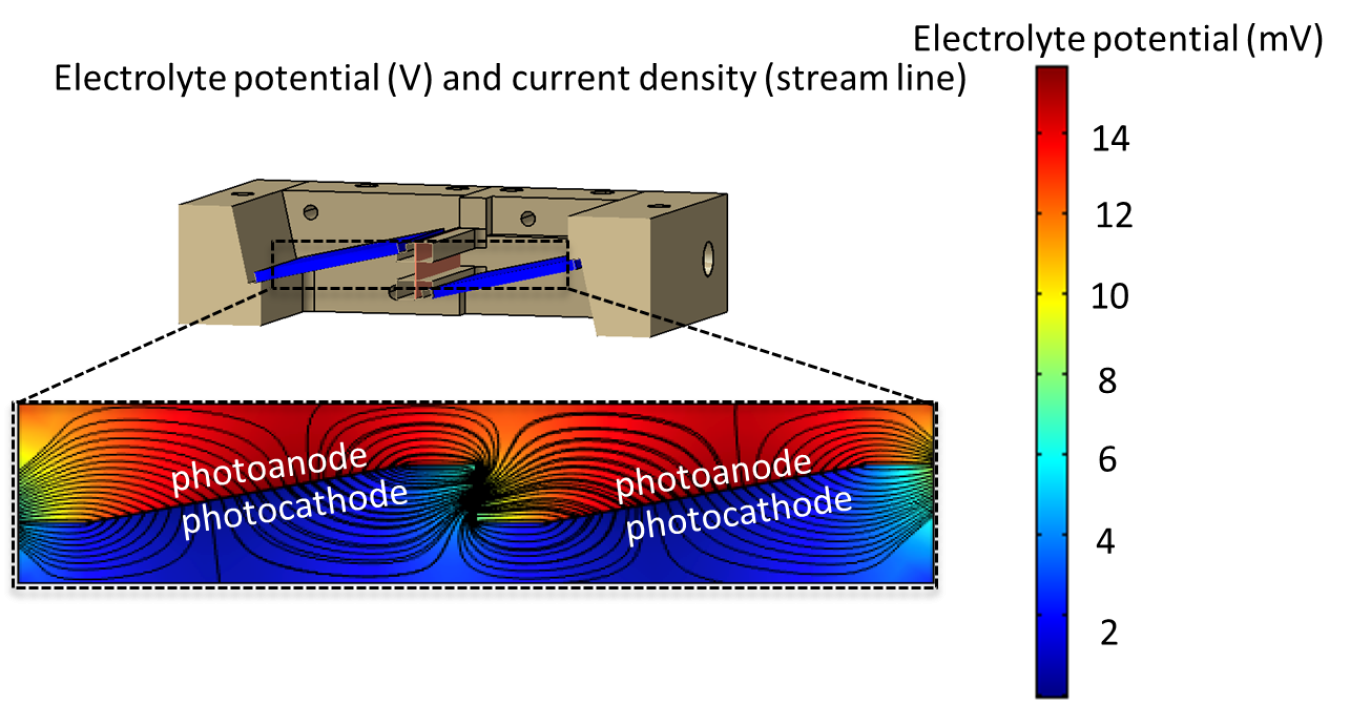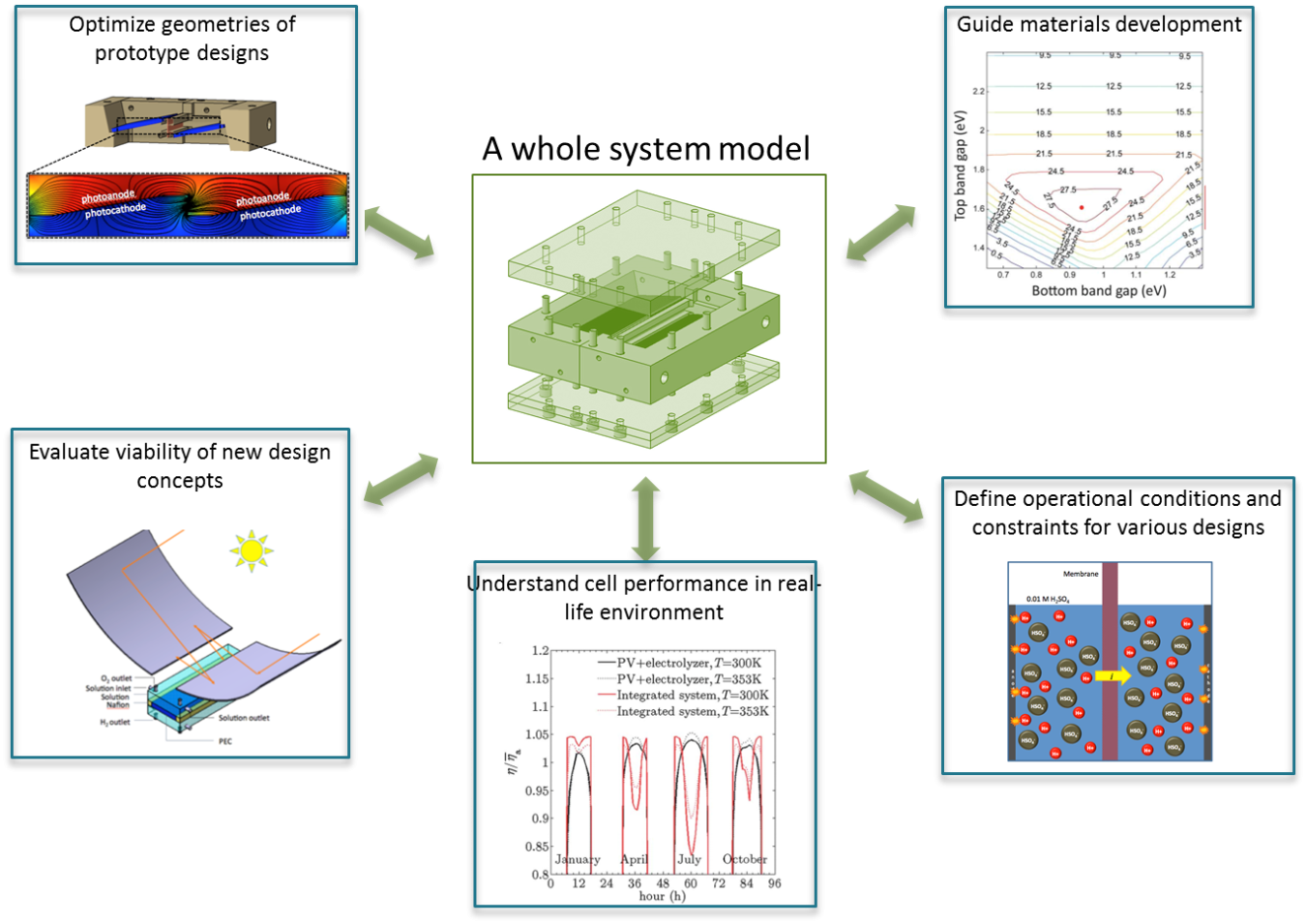
LABORATORY
Lawrence Berkeley National Laboratory (LBNL)
CAPABILITY EXPERT
Adam Weber
CLASS
Computational Tools and Modeling
WATER-SPLITTING TECHNOLOGY
High-Temperature Electrolysis (HTE)
Low-Temperature Electrolysis (LTE)
Photoelectrochemical (PEC)
Solar Thermochemical (STCH)
Description
LBNL has extensive experience and developed models and methodologies in the multiscale modeling of photoelectrochemical and electrolyzer cells as well as related fuel cells and redox flow batteries with a focus on transport phenomena, reaction kinetics, and multiphase aspects including water and thermal management. Analysis of the various losses in the cell allowed for the initial cell design modalities in PEC to be established including implications for operation without membranes. Similarly, the various overpotentials and cell material and physical properties for electrolyzer cells can be defined. In addition, there are several diagnostics that have been developed specifically for model parameter input.
Capability Bounds
Continuum scale including mesoscale simulations; for cell design optimization.
Unique Aspects
Developed and validated multiscale models along with associated diagnostics for model input parameters including synchrotron studies. Expertise related to PEC and related cell designs and component properties and interactions.
Availability
Available although will require some fine tuning for specific systems.
Benefit
This capability is central for evaluation of cell designs and determination of critical parameters including material properties and definition of research priorities.
Images

Figure 1.

Figure 2. Example of potential profiles and current streamlines for PEC device in order to design it for maximum performance.

Figure 3. Example of what continuum-scale modeling can provide.
References
Jeffrey T. Gostick and Adam Z. Weber, ‘Resistor-Network Modeling of Ionic Conduction in Polymer Electrolytes,’ Electrochimica Acta, 179, 137-145 (2015).
Adam Z. Weber, Rodney L. Borup, Robert M. Darling, Prodip K. Das, Thomas J. Dursch, Wenbin Gu, David Harvey, Ahmet Kusoglu, Shawn Litster, Matthew Mench, Rangachary Mukundan, Jon P. Owejan, Jon Pharoah, Marc Secanell, and Iryna Zenyuk, ‘A Critical Review of Modeling Transport Phenomena in Polymer-Electrolyte Fuel Cells,’ J. Electrochem. Soc., 161 (12), F1254-F1299 (2014).
Sophia Haussener, Chengxiang Xiang, Josh Spurgeon, Shane Ardo, Nathan S. Lewis, and Adam Z. Weber, ‘Modeling, Simulation, and Design Criteria for Photoelectrochemical Water-Splitting Systems,’ Energy and Environmental Science, 5 (12), 9922-9935 (2012). doi: 10.1039/C2EE23187E.
Meenesh R. Singh, John C. Stevens, and Adam Z. Weber, ‘Design of Membrane-Encapsulated Wireless Photoelectrochemical Cells for Hydrogen Production,’ J. Electrochem. Soc., 161 (8), E3283-E3296 (2014). doi: 10.1149/2.033408jes.
Chengxiang Xiang, Adam Z. Weber, Shane Ardo, Alan Berger, YiKai Chen, Robert Coridan, Katherine T. Fountaine, Sophia Haussener, Shu Hu, Rui Liu, Nathan S. Lewis, Miguel A. Modestino, Matthew M. Shaner, Meenesh R. Singh, John C. Stevens, Ke Sun, and Karl Walczak, ‘Modeling, Simulation, and Implementation of Solar-Driven Water-Splitting Devices,’ Angewandte Chemie International Edition, 55, 12974-12988 (2016). doi: 10.1002/anie.201510463. 10.1002/ange.201510463.
Rohini Bala Chandran, Sasuke Breen, Yuanxun Shao, Shane Ardo, and Adam Z. Weber, ‘Evaluating Particle-Suspension Reactor Designs for Z-Scheme Solar Water Splitting via Transport and Kinetic Modeling,’ Energy and Environmental Science, (2017). doi: 10.1039/C7EE01360D.
Contact us to find out more about collaboration opportunities and access the capability nodes within the HydroGEN network.

